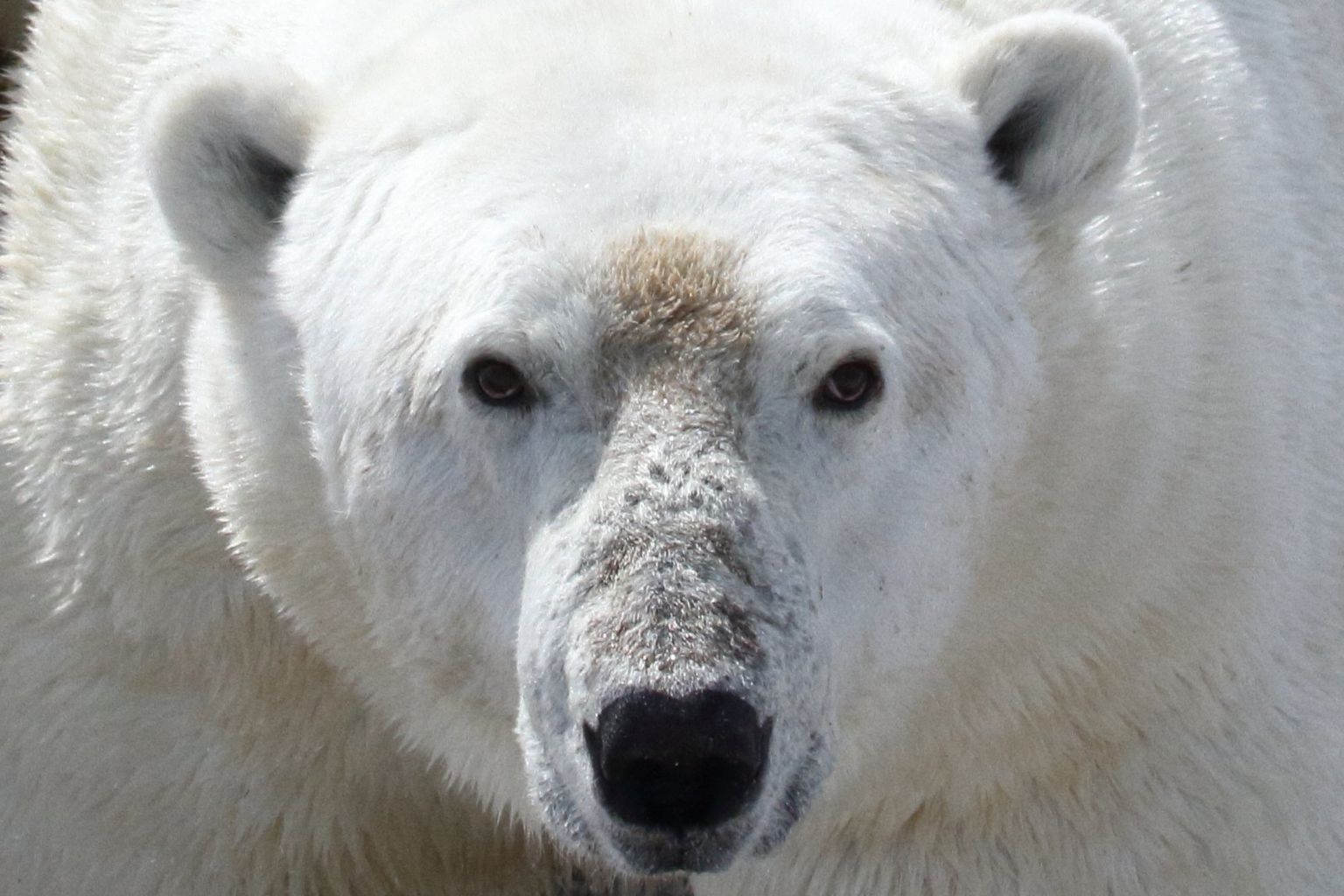ARTICLE AD BOX
 Image source, David McGeachy
Image source, David McGeachy
By Matt McGrath
Environment correspondent
Some polar bears face starvation as the Arctic sea ice melts because they are unable to adapt their diets to living on land, scientists have found.
The iconic Arctic species normally feed on ringed seals that they catch on ice floes offshore.
But as the ice disappears in a warming world, many bears are spending greater amounts of time on shore, eating bird's eggs, berries and grass.
However the animals rapidly lose weight on land, increasing the risk of death.
The polar bear has become the poster child for the growing threat of climate change in the Arctic, but the reality of the impact on this species is complicated.
While the number of bears plummeted up to the 1980s this was mainly due to unsustainable hunting.
With greater legal protection, polar bear numbers have risen. But increasing global temperatures are now seen as their biggest threat.
That's because the frozen Arctic seas are key to their survival.
The animals use the sea ice as a platform to hunt ringed seals, which have high concentrations of fat, mostly in late spring and early summer.
But during the warmer months many parts of the Arctic are now increasingly ice-free.
Image source, David McGeachy
Image caption,Polar bears in the study lost weight when spending more time on land as the sea ice melted
In Western Manitoba where this study was carried out, the ice-free period has increased by three weeks between 1979 and 2015.
To understand how the animals survive as the ice disappears, researchers followed the activities of 20 polar bears during the summer months over a three-year period.
As well as taking blood samples, and weighing the bears, the animals were fitted with GPS-equipped video camera collars.
This allowed the scientists to record the animals movements, their activities and what they ate.
In the ice-free summer months, the bears adopted different strategies to survive, with some essentially resting and conserving their energy.
The majority tried to forage for vegetation or berries or swam to see if they could find food.
Both approaches failed, with 19 of the 20 bears in the study losing body mass, by up to 11% in some cases.
Image source, USGS/WASHINGTON STATE UNIVERSITY
Image caption,Researchers used collar-mounted cameras and GPS to track the movements and actions of the bears
On average they lost one kilogramme per day.
"Regardless of which strategy they were trying to use, there was no real benefit to either approach as far as being able to prolong the period that they could survive on land," according to lead author Dr Anthony Pagano, from the US Geological Survey in Alaska.
"Polar bears are not grizzly bears wearing white coats," said co-author Charles Robbins from the Washington State University Bear Center.
"They're very, very different."
Two of the three bears that took to the water found carcasses of dead animals but spent only a short time eating, as they were too tired from their exertions.
"One sub-adult female found a dead beluga whale, she took a couple of bites from it, but she mostly used it as a buoy to rest on," Dr Pagano told BBC News.
"It really suggests to us that that these bears can't eat and swim at the same time."
Key polar bear facts
- There are about 26,000 polar bears left in the world, with the majority in Canada. Populations are also found in the US, Russia, Greenland and Norway.
- Polar bears are listed as vulnerable to extinction by the International Union for Conservation of Nature (IUCN), with climate change a key factor in their decline.
- Adult males can grow to be around 3m long and can weigh close to 600kg.
- Polar bears can eat up to 45kg of blubber in one sitting.
- These bears have a powerful sense of smell and can sniff out prey from up to 16km away.
- These animals are strong swimmers and have been spotted up to 100km offshore, they can swim at speeds of around 10km per hour, due in part to their paws which are slightly webbed.
An intriguing finding in the study was that one bear gained 32kg in weight.
The researchers believe that this bear, who had spent much of his time resting and conserving his strength, was fortunate to stumble across an animal carcass.
While previous research has outlined the challenges that climate poses over the decades to come, this new work raises important questions about the species' ability to adapt.
However other researchers say the impacts of climate change on polar bears would differ, depending on location.
"It is likely polar bears will disappear from areas where sea ice will be lost in future, but difficult to say just when and where," said Jon Aars from the Norwegian Polar Institute who was not involved in the study.
"Some areas will have good conditions for bears also many decades from now."
"The area of this study is one where conditions may be very difficult for bears within a short time, if sea ice continues to disappear as predicted."
The study has been published in Nature Communications.

 11 months ago
121
11 months ago
121








 English (US) ·
English (US) ·